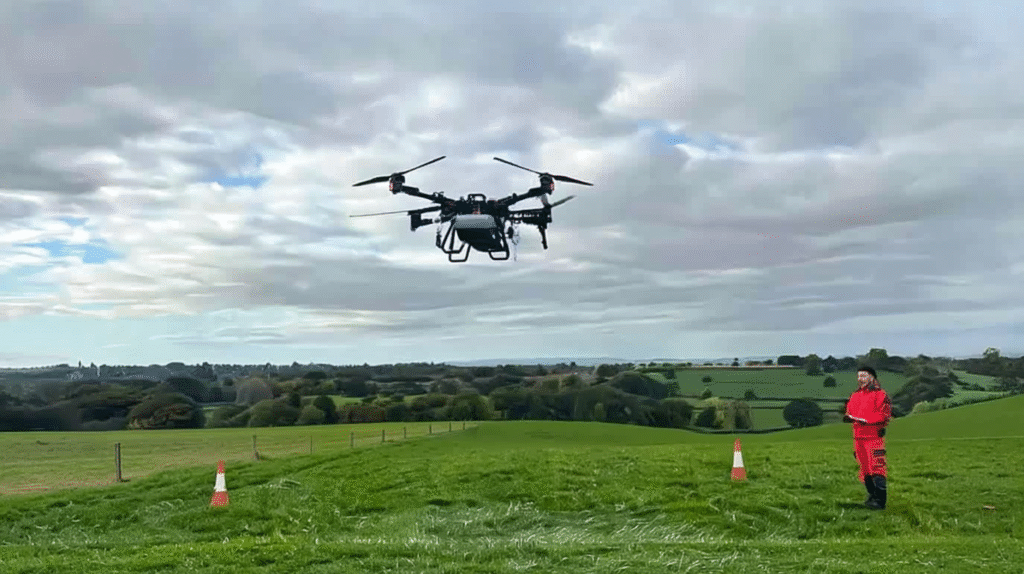Agriculture’s future may well lie in the skies above Shropshire. On a windswept hillside, dairy farmer and drone pilot Frazer Bloor stands with a control pad in hand, guiding a black, 3-metre-wide aircraft as it releases a mist of liquid seaweed fertiliser over a field sown with herbs and grasses.
This isn’t science fiction; it’s the new face of British farming.
Nearly a decade ago, trials at Harper Adams University showcased drones capable of spraying fertiliser and pesticides, yet regulation at the time made such applications impossible. Fast-forward to today, and government attitudes have changed dramatically. New rules are paving the way for large-scale agricultural drone use across the UK’s farmland.
The shift has been driven in part by Autospray Systems, a Stoke-on-Trent-based firm training farmers to use the technology and helping shape the policies that govern it. Chief executive Rob Pearson said his company has been working closely with regulators to highlight the safety and environmental benefits of drone farming.
“Flying means no heavy tractors compacting the soil,” Pearson explained. “In remote or hilly areas where tractors are impractical or unsafe, drones are the perfect solution.”
Each of Autospray’s drones spans three metres from blade to blade and weighs up to 160 kilograms. They’re powered by water-cooled batteries that charge rapidly and generate significant heat — a sign of just how powerful this technology has become.
For farmers like Bloor, the practical advantages are clear. “The drone is a lot safer for applying liquids and seeds on these hills,” he said. Traditional hillside seeding has often relied on letting grazing cattle spread grass naturally, but aerial planting allows for greater accuracy and efficiency — with the option to deliver organic fertilisers directly to the soil.
Currently, drones in the UK can only distribute natural products such as liquid seaweed, but moves are under way to allow controlled use of conventional agrochemicals in the near future.
At present, around 50 agricultural drones are already operating across Britain. By the end of next year, that number is expected to rise tenfold to 500, marking one of the fastest adoptions of autonomous aerial machinery in European agriculture.
As both policy and perception evolve, drone farming is poised to become a cornerstone of Britain’s precision agriculture revolution — reducing soil compaction, improving safety, and offering a more sustainable way to farm even the most challenging terrain.


